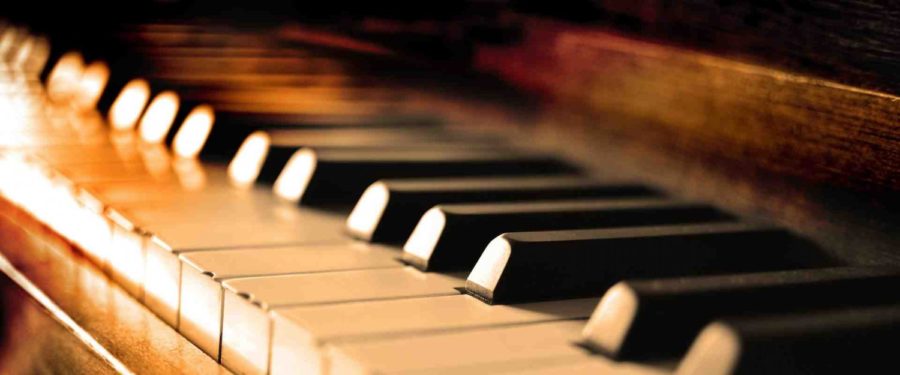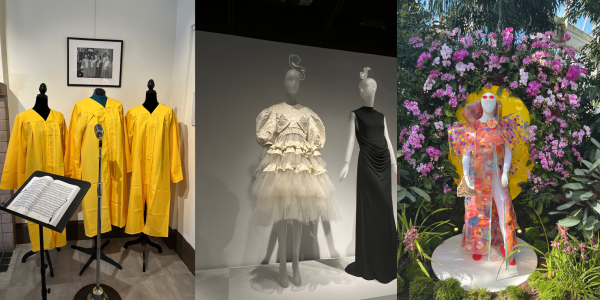The Maestro’s Corner: A Sweet Suite
JS Bach’s French Suite #5 in G Major, as performed by Sir András Schiff
András Schiff - Bach. French Suite No.5 in G Major BWV816
January 19, 2018
JS Bach, with an impressive list of compositions from concerti to cantatas to chamber music, was certainly one of the most prolific classical composers. In his signature methodical style, Bach crafted hundreds of chorale, keyboard, and ensemble works, which have been adapted for many different instruments since their initial publication.
Some of Bach’s most beloved pieces are his keyboard works. When Bach was writing music in the early 1700s, the piano had not yet been invented. So, many of his greatest keyboard masterpieces and collections – such as the Well-Tempered Clavier (books I and II) and the infamous Goldberg Variations – were actually written for period instruments like the harpsichord, clavichord, and pipe organ. (In fact, the Well-Tempered Clavier collections are actually just exercises in different keys, written to assist in tuning clavichords).
However, the true glory of Bach is his universality. Bach’s keyboard works are so well-suited to the piano that they are now seldom played on their originally intended instruments. Famous pianists of all kinds, from Glenn Gould to Angela Hewitt, have recorded their renditions of Bach’s keyboard works.
Some of the most beloved of these works are the six French Suites, written between 1722 and 1725. These are small collections of coordinating dances, which contain with various exclusions an Allemande, Courante, Sarabande, Gavotte, Polonaise, Bourrée, Menuet, Loure, and Gigue. The video above is French Suite #5, which is in G Major and contains neither a Polonaise nor a Menuet.
The French Suites are lyrical and intricate in the style of Bach, but not as technically challenging as most of his other works. Because most of the pieces in these Suites only incorporate two or three voices, the counterpoint sections are much easier to learn for intermediate to advanced piano students. However, this is where Bach’s universal beauty shines again. Even his simplest works become sublime when performed by a talented musician. Baroque music in general lends itself to ornamentation, elaboration, and the individual expression of the performer, especially because many sections are usually repeated and ought to be different the second time. Bach is no exception, and the elaborate purity of his French Suites offers the perfect opportunity to showcase both the technical and creative genius of the performer.
In the video showcased above, the great Sir András Schiff, a British classical pianist and conductor, tackles French Suite #5 (BWV816) with authority and lyricism. This is my favorite performance of the piece, because (unlike, for instance, the often-mechanical Gould), Schiff captures both the technical and expressive aspects of each dance. Listen to the Courante at 3:01. This swift and nimble dance has two sections, each of which is played twice. However, Schiff never plays the exact same thing on the repeats – on the second time around, he changes the ornamentation (3:27), adds trills (4:14), and alters his expression, often by changing the dynamics (the section starting at 4:14 is quieter than its first iteration). And, as you can easily ascertain by listening, he does this without needing to sacrifice any of the immaculate technicality so often emphasized in the performance of Bach.
Certain parts of the French Suite lend themselves to one extreme or the other – romanticism or technicality. The Sarabande starting at 4:33 is meditative and elegant, but Schiff hangs onto the structure without getting carried away by the rubato (rhythmic alterations) the piece may inspire. Meanwhile, the Gigue at 12:52 is exuberant, crystalline, and technically brilliant, but Schiff still retains its lyricism – quite a feat, given its speed. Listen to the exquisite dynamic modulation at 15:31. In Bach, Schiff makes no compromises.
French Suite #5 is not a long piece. Even with all the repeats, this set of seven dances is only about 16 minutes long. However, each piece – from the graceful Allemande (0:05) to the clockwork Gavotte (8:49) to the ridiculously rapid Bourrée (09:58) and its partner, the introspective Loure (11:05) – conveys a radically different emotion. Thus, French Suite #5 is both a journey across a Baroque ballroom and a journey across the soul of Bach. Schiff’s rendition of the piece is as technically precise as is conceivable, but what makes this performance so remarkable is the manner in which Schiff conserves the soul of the music as well as the crisp notes. It has been said many times that composers live on through their music, and this has certainly never been more true than through the able fingers of Sir Schiff.













